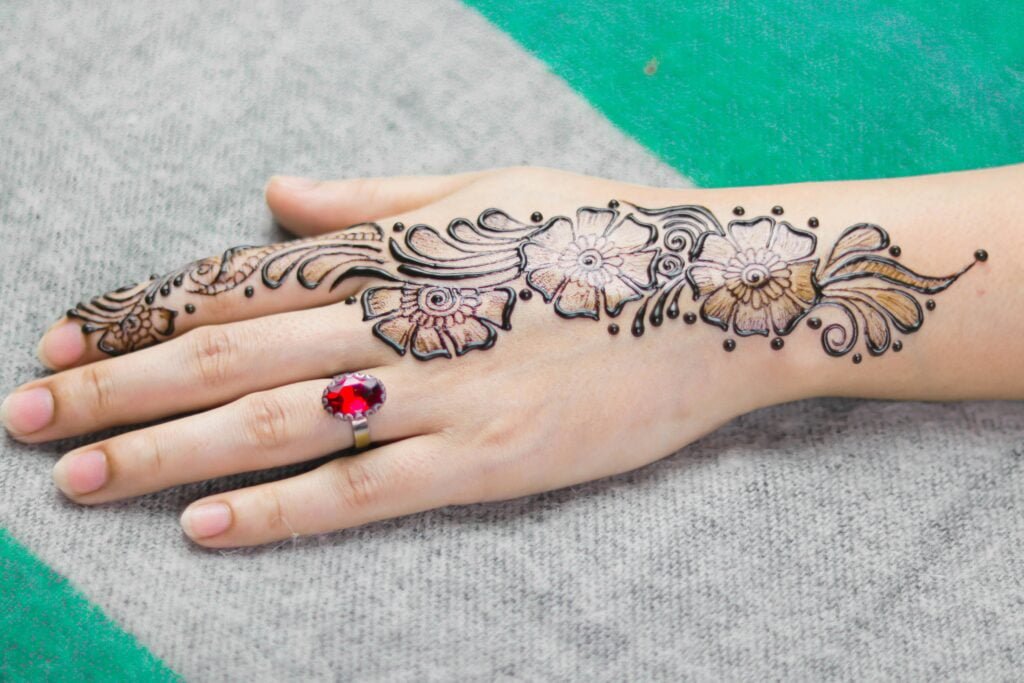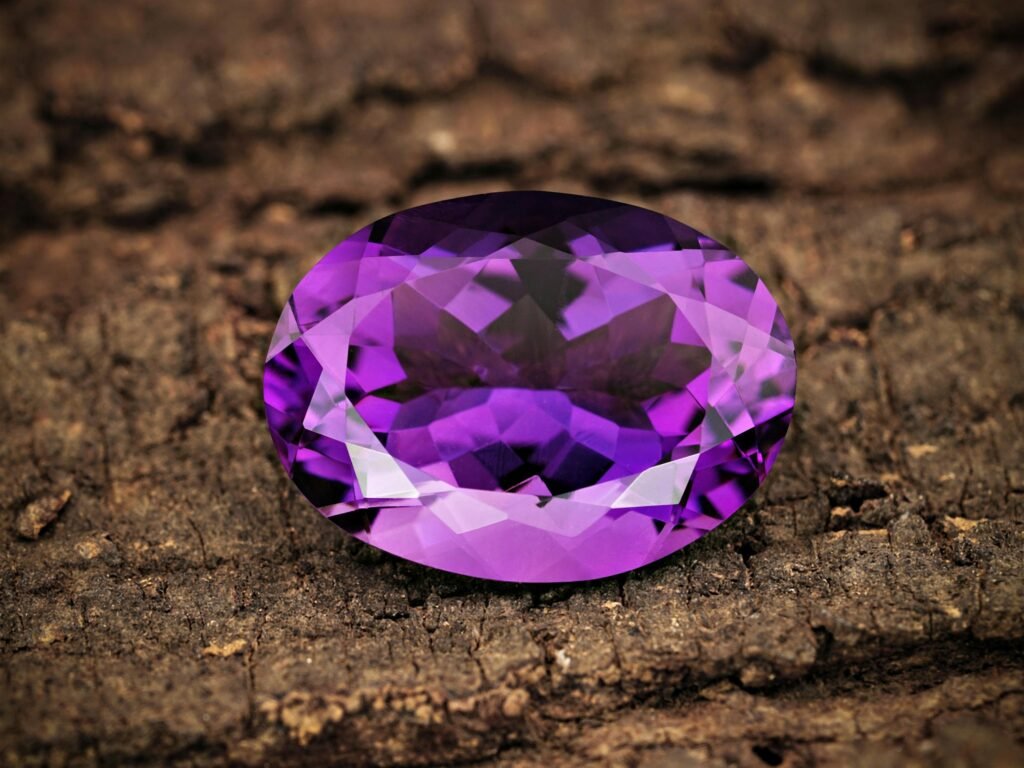In history, some gems have shone brighter than others, earning the special title of “Cardinal Gems.” Even though we don’t use this term much anymore, these precious stones still hold a lot of meaning and charm, just like they did in the old days. These precious jewels, celebrated for their rarity, brilliance, and enduring allure, have captivated human imagination for centuries. From the illustrious sparkle of diamonds to the mesmerising hues of sapphires, rubies, emeralds, and amethysts, each gem bears a rich history and distinctive characteristics that contribute to its esteemed status in the world of jewellery. Join us as we embark on a journey to explore the enchanting world of cardinal gemstones, unraveling their individual splendors and tracing their evolution through time.
Before delving into the specifics of each gem, it’s essential to grasp the concept of cardinal gemstones. A cardinal gemstone, also known as a precious gemstone, possesses exceptional rarity, beauty, and value. Historically, these gems were associated with royalty, wealth, and power, serving as symbols of prestige and status. The cardinal gemstones traditionally include diamond, sapphire, ruby, emerald, and amethyst, revered for their intrinsic qualities and timeless elegance.

As the epitome of luxury and sophistication, diamonds reign supreme among cardinal gemstones. Renowned for their unparalleled brilliance and durability, diamonds symbolise everlasting love and purity. The allure of diamonds lies in their remarkable clarity, refractive index, and scintillation, which create a mesmerising play of light. Traditionally colourless, diamonds also occur in rare fancy colours, including yellow, pink, blue, and green. Antique diamond jewellery often features classic cuts such as the old mine cut, rose cut, and European cut, showcasing the gem’s timeless appeal. Learn more about diamonds on the GIA website.

Distinguished by its celestial blue hue, sapphire exudes a sense of elegance and mystique. While blue sapphires are the most coveted, sapphires occur in a spectrum of colours, including pink, yellow, and violet, known as fancy sapphires. Revered for their hardness and brilliance, sapphires symbolise wisdom, virtue, and divine favor. Antique sapphire jewellery often showcases the gem in traditional cuts like the cushion cut, oval cut, and emerald cut, accentuating its regal allure and celestial beauty. Learn more about sapphire on the GIA website

Radiating passion and vitality, the ruby captivates with its fiery red hue and inner glow. Symbolising love, courage, and prosperity, rubies possess exceptional rarity and intensity, making them highly prized among gem enthusiasts. The finest rubies exhibit a vivid red colour, often referred to as “pigeon’s blood.” Antique ruby jewellery showcases the gem in elegant cuts such as the cushion cut, pear shape, and oval cut, evoking a sense of timeless romance and allure. Learn more about Ruby on the GIA website.
Fun fact: The “Black Prince’s Ruby” adorning the British Crown Jewels is a captivating gem shrouded in myth and intrigue. Despite its name, this famous stone isn’t actually a ruby but rather a magnificent red spinel. Believed to have originated from ancient mines in present-day Tajikistan, the stone’s deep crimson hue and remarkable size have contributed to its legendary status. Named after Edward of Woodstock, also known as the Black Prince, who purportedly owned the gem in the 14th century, this spinel has adorned various royal regalia throughout history. Its inclusion in the Crown Jewels reflects not only its exceptional beauty but also the enduring fascination with gems that transcend mere classification, captivating hearts and minds with their timeless allure.

With its lush green hue reminiscent of nature’s beauty, the emerald embodies vitality, renewal, and growth. Prized for its rich colour and inner clarity, emeralds evoke a sense of luxury and opulence. While emeralds may contain natural inclusions, known as ‘jardin’ or ‘garden’ because they can resemble moss or foliage, these imperfections are embraced as part of the gem’s character, unlike some other gemstones. For example, diamonds, where the best are those that have the least amount of inclusions and therefore a higher clarity.
Most agree that the best emeralds come from Colombia with their pure, bright, and saturated green colour. Therefore, they are typically the more expensive and most sought-after variety of emerald. However, in recent years, Zambian emeralds have surged in popularity, rivaling the longstanding reputation of Colombian emeralds. This newfound acclaim stems from Zambia’s emergence as a major producer of high-quality emeralds, characterised by their rich green colour, excellent clarity, and impressive size. Additionally, ethical mining practices and a transparent supply chain have further enhanced the appeal of Zambian emeralds, attracting discerning buyers seeking responsibly sourced gemstones with exceptional beauty and value.
Antique emerald jewellery often features the gem in classic cuts like the emerald cut, cabochon cut, and pear shape, highlighting its mesmerising allure and regal charm. Learn more about emerald on the GIA website

Rounding out the pantheon of cardinal gemstones is the enchanting amethyst, prized for its soothing purple hue and spiritual significance. Symbolising peace, clarity, and inner strength, amethysts are treasured for their captivating colour and affordability. Antique amethyst jewellery often showcases the gem in ornate cuts like the cushion cut, antique cushion cut, and round brilliant cut, giving the gem an air of timeless elegance and mystique. Learn more about amethyst on the GIA website
While the allure of cardinal gemstones endures through the ages, their perception and significance have evolved over time. In ancient civilisations, these gems were revered for their mystical properties and believed to possess supernatural powers. Over the centuries, cardinal gemstones became synonymous with wealth, power, and social status, adorning the crowns, jewellery, and regalia of royalty and nobility.
In modern times, cardinal gemstones continue to captivate and inspire, albeit with a greater emphasis on aesthetics, craftsmanship, and personal expression. While diamonds remain a timeless symbol of love and commitment, sapphires, rubies, emeralds, and amethysts offer a vibrant palette of colours and meanings for discerning jewellery enthusiasts. Whether adorning an heirloom necklace, engagement ring, or statement earrings, cardinal gemstones continue to enchant and delight, bridging the past with the present in a timeless celebration of beauty and elegance.
It is also important to note that today, diamonds have become synonymous with fine jewellery and luxury pieces. However, in the past, they were on the same level as the other cardinal gems. Modern jewellery shop windows often display a vast array of diamond rings, for example, with only a small selection of emeralds, rubies, and sapphires. Antique pieces, on the other hand, are much more varied, and you will find a large number of jewellery items set with some beautiful coloured gemstones.
In the world of jewellery, cardinal gemstones occupy a special place, revered for their rarity, beauty, and enduring allure. From the timeless brilliance of diamonds to the celestial hues of sapphires, rubies, emeralds, and amethysts, each gem exudes a unique charm and elegance that transcends time and trends. Whether cherished as heirlooms, treasured gifts, or personal indulgences, cardinal gemstones continue to inspire wonder and admiration, weaving a rich tapestry of history, tradition, and romance for generations to come.
For more helpful articles and information, check out our advice centre.